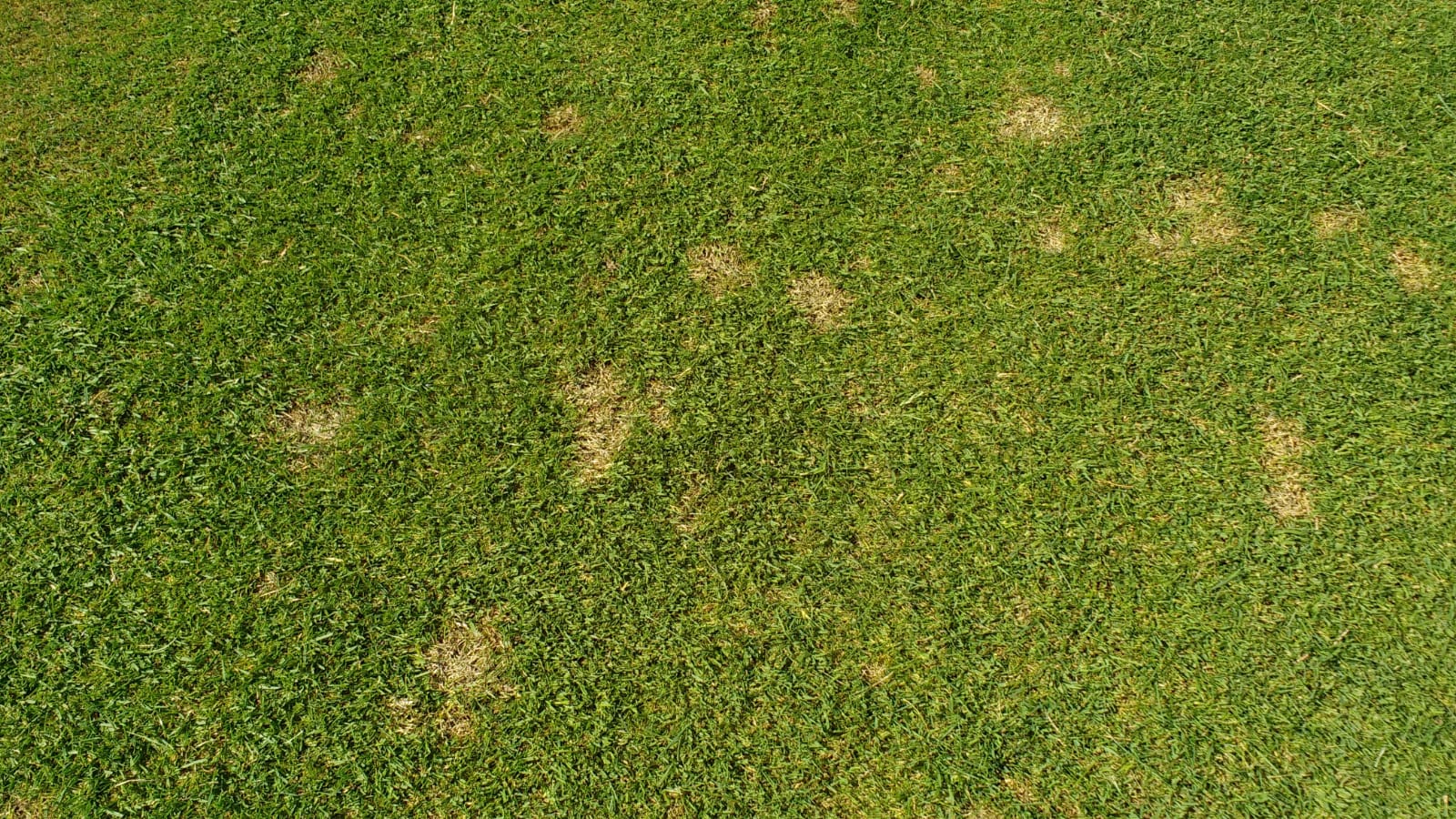Fungal pathogens cause the majority of turf diseases, but some fungi are more strongly pathogenic than others. Many of the common cool season turf diseases are caused by fungi that rely on a weakened plant, and therefore reducing disease incidence and severity is often aligned to maintaining a strong sward. With ongoing changes to European Legislation relating to pesticide use, it is more important than ever that an integrated approach to disease management is employed and central to this is an understanding that cultural conditions can limit disease development. Making use of the genetic variation that exists between grass types and cultivars can also minimise disease development through a sward. By managing rootzone quality and using weather information services, it can also be possible to pre-empt disease outbreaks and plan an efficient integrated management strategy.
Pathogen: Clarireedia homoeocarpa (formerly Sclerotinia homoeocarpa)
Susceptible Species: This turfgrass disease can affect all species of turfgrass, including but not limited to Kentucky bluegrass, fine fescues, perennial ryegrass, bentgrasses and Poa annua. However, it most frequently affects closely mown turf, such as that found on golf courses
Dollar spot disease can occur at any time during the growing season when conditions are favourable for the fungus. However, it most commonly appears in the late spring through fall. The fungus prefers cool, wet conditions and is most active when night temperatures are between (10-21°C) and the relative humidity is above 90%. Extended periods of leaf wetness due to high humidity, dew, fog, or rainfall can also favour the development of dollar spots. The disease is often associated with low nitrogen levels, so regular fertilisation can help to prevent it. Irrigation should be done early in the day so the grass can dry out before night falls, as extended periods of leaf wetness can promote the disease. The disease is often more severe in closely mown turfgrass, like on golf courses. The fungus can survive conditions (like winter or periods of drought) as resistant fungal structures called sclerotia in plant debris and soil. When favourable conditions return, the fungus can resume infection.
Non-Pesticidal Dollar Spot Prevention:
Dollar spot is slowly becoming a more prevalent disease in the golf course environment. As we move forward, I foresee this becoming more apparent with the constantly changing climate and the general decrease in nitrogen use on playing surfaces. Research conducted at the University of Wisconsin in 2022 has shown that applying nutrients can reduce dollar spot severity.
Using Classic-18-0-6 will aid in the suppression of dollar spot with its Urea and potassium carbonate content. Pot Carb Max-0-0-25 could also be added to the mixture to increase the pot carb content. Having a balanced application of nutrients will benefit the turfgrass sward in combatting the disease.
Research has shown that Bacillus subtilis strain will directly compete against soil-borne pathogens. Companion will also aid in simulating an induced systemic resistance (ISR) and plant growth-promoting rhizobacterium (PGPR).
Using Smith Kerns Dollar Spot Forecast Model gives the ability to the course manager to predict the onset of the disease. On putting greens, research has shown that a consistent program of lightweight rolling once or twice per day, five days per week, generally reduces dollar spot pressure. The greatest benefit of rolling occurred when performed twice in the morning following mowing. However, rolling once either in the morning or afternoon sometimes was beneficial in reducing disease pressure.
A cultural programme of management throughout the growing season is important to enable surfaces to perform well with reduced reliance on chemical applications all year round.

Example of Dollar Spot
Image Courtesy of Ian Harrison
Symptoms:
Dollar spot is named for the silver dollar-sized spots (around 2-6 inches in diameter) that appear in turfgrass when it is affected. These spots can merge into larger areas if the disease is left untreated. The grass in these spots will often appear bleached or straw-coloured. A closer examination may reveal a white, cottony mycelium growth in the early morning dew. Individual grass blades may show tan lesions with a reddish-brown border.

